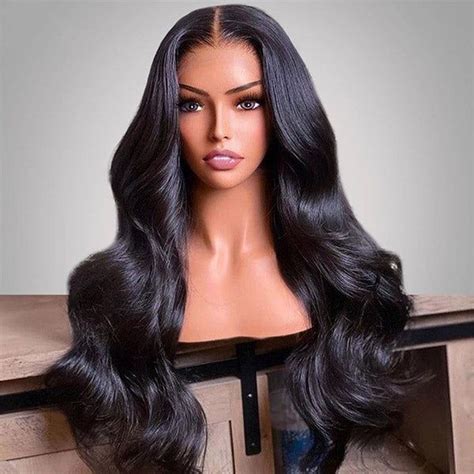Low density wigs have emerged as an innovative solution for individuals seeking a balance between comfort and realistic hair appearance. These wigs feature a reduced amount of hair fibers per square inch, resulting in a lighter and less bulky experience while still providing a natural-looking head of hair.

Understanding Low Density Wigs
Hair Density: Hair density refers to the number of hair strands per square centimeter of scalp. In natural hair, the average density ranges from 100 to 150 hairs per square centimeter. Low density wigs typically have densities ranging from 80 to 120 hairs per square centimeter, creating a more natural and breathable effect.
Cap Construction: Low density wigs often utilize cap constructions that support the reduced hair weight. These cap designs include:
- Mono Top Wigs: Mono tops feature a transparent or lace top that creates the illusion of a natural scalp, providing a realistic appearance and freedom to part the hair in multiple directions.
- Lace Front Wigs: Lace front wigs have a lace frontal that extends from ear to ear, allowing for a seamless blend with the hairline and natural-looking styling.
- Machine-Tied Wigs: Machine-tied wigs are constructed using a machine to tie the hair fibers onto the cap, resulting in a lightweight and breathable result.
Benefits of Low Density Wigs
- Enhanced Comfort: The reduced hair weight significantly improves comfort, especially for individuals who experience scalp sensitivity or discomfort with traditional wigs.
- Natural Appearance: Low density wigs mimic the natural hair density of many people, providing a realistic and flattering appearance.
- Breathability: The reduced hair fibers allow for better air circulation to the scalp, preventing overheating and providing a more comfortable wearing experience.
- Versatile Styling: Low density wigs offer versatility in styling, allowing for blowouts, curls, and other styling techniques without adding bulk or weight.
Choosing the Right Low Density Wig
Selecting the right low density wig requires careful consideration of several factors:
- Hair Density: Determine your natural hair density or desired fullness and choose a wig with a corresponding density.
- Cap Construction: Choose a cap construction that aligns with your desired appearance and comfort level.
- Color and Texture: Select a wig that matches your natural hair color and texture for a seamless blend and a natural look.
- Wig Type: Consider synthetic or human hair wigs based on your budget and hair care preferences.
How to Care for Low Density Wigs
Proper care extends the lifespan and maintains the quality of low density wigs. Follow these essential steps:
- Wash Gently: Use a mild shampoo and lukewarm water to clean the wig, avoiding excessive scrubbing or twisting.
- Condition Regularly: Condition the wig to maintain softness and prevent tangles after washing.
- Air Dry: Allow the wig to air dry naturally to prevent heat damage.
- Detangle Carefully: Use a wide-toothed comb or brush to gently detangle the wig from tips to roots.
- Store Properly: When not in use, store the wig on a mannequin or wig stand to preserve its shape.
Creative Applications of Low Density Wigs
Beyond their traditional use for hair loss, low density wigs have found innovative applications:
- Hair Volume Enhancement: Individuals with fine or thin hair can add volume and fullness to their natural hair using low density clip-in extensions or toppers.
- Special Effects: Film and theater professionals use low density wigs to create dramatic and realistic hairstyles that are easier to manage than full hair prosthetics.
- Cosplay: Low density wigs enable cosplayers to transform into characters with unique and eye-catching hairstyles without the discomfort of heavy wigs.
- Photography: Photographers use low density wigs as a creative tool to enhance the aesthetic of their subjects and create a more polished look.
Frequently Asked Questions (FAQs)
Q: Can low density wigs look realistic?
A: Yes, low density wigs are designed to provide a natural-looking appearance by reducing bulk and mimicking the hair density of many people.
Q: Are low density wigs durable?
A: The durability of low density wigs varies depending on the cap construction and hair type used. Proper care and handling can extend their lifespan significantly.
Q: Can I style low density wigs?
A: Yes, low density wigs can be styled with heat tools on low settings. However, excessive heat can damage the hair fibers, so use precautions.
Q: How often should I wash a low density wig?
A: Wash the wig every 6-8 wears, or more frequently if it becomes dirty or oily.
Conclusion
Low density wigs offer a transformative hair solution that combines comfort, natural appearance, and versatility. Whether seeking hair volume enhancement, creative expression, or simply a comfortable alternative to traditional wigs, low density wigs provide a perfect blend of style and well-being. By understanding the benefits, choosing the right wig, and maintaining it properly, you can enjoy the transformative power of low density wigs.
